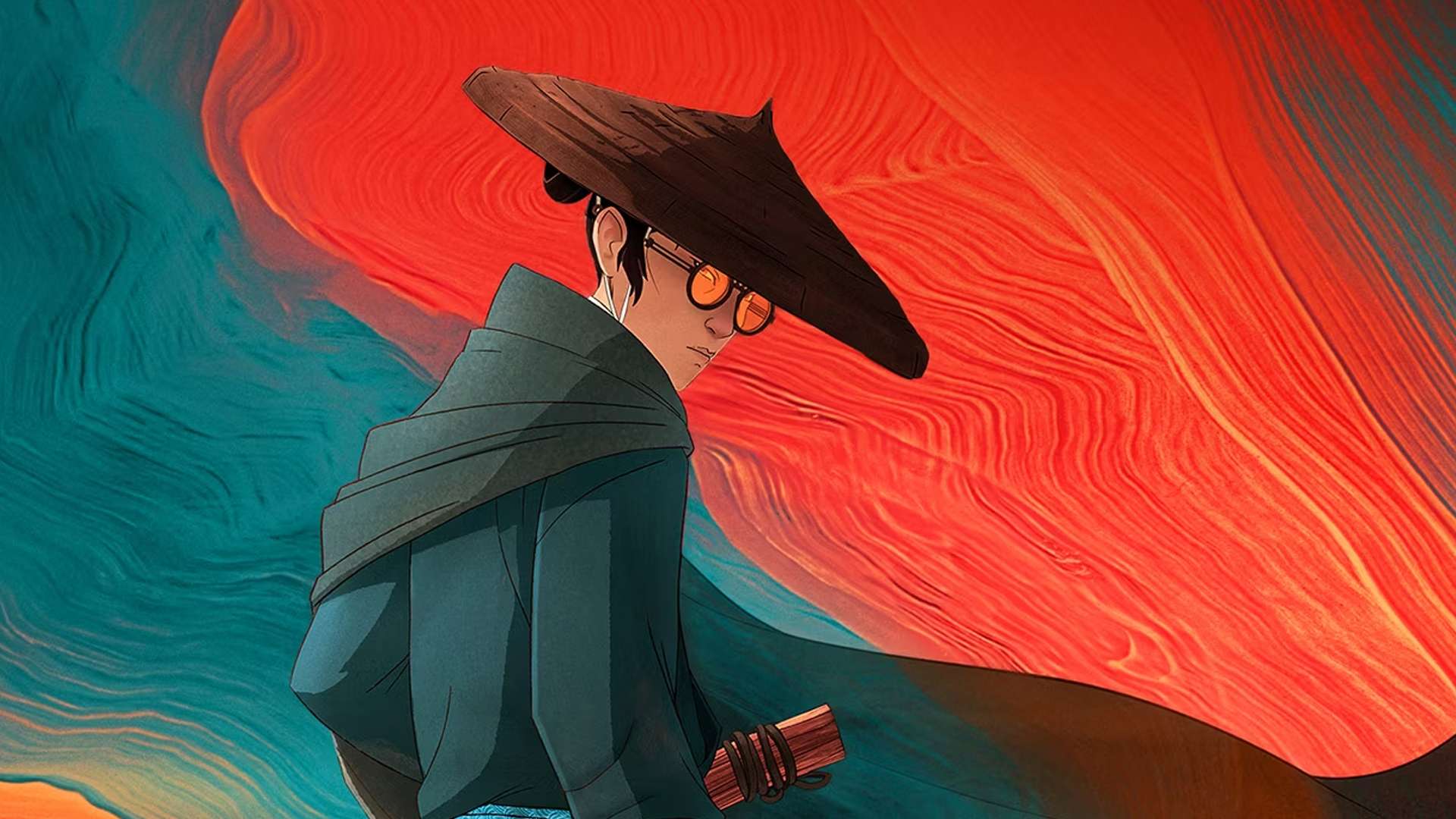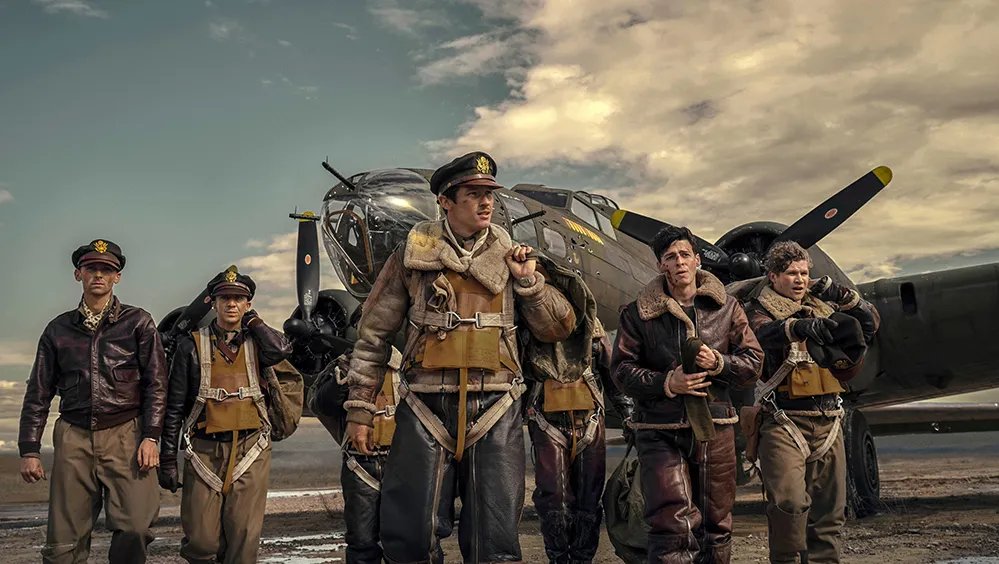

Streaming
Blue eyes samurai review
“Blue Eyes Samurai” on Netflix is a compelling anime series that intricately weaves an engaging storyline with breathtaking artwork, offering a rich and immersive viewing experience. The narrative unfolds in a feudal Japan setting, following the journey of a skilled samurai striving for redemption and self-discovery.
The storyline is a masterful blend of action, drama, and character development. It skillfully explores themes of honor, loyalty, and the complexities of the human spirit. The protagonist’s internal struggles are portrayed with depth, creating a relatable and empathetic connection with the audience. The plot twists and turns keep viewers on the edge of their seats, adding layers of intrigue and suspense to the overall narrative.
The standout feature of “Blue Eyes Samurai” is undeniably its beautiful artwork. The animation is a visual feast, characterized by vibrant colors, fluid motion, and meticulous attention to detail. Each frame is a work of art, capturing the essence of feudal Japan and enhancing the overall atmosphere of the series. The character designs are both distinct and expressive, contributing to the emotional impact of the storytelling.
The action sequences are a spectacle to behold, choreographed with precision and flair. The combination of dynamic movements, strategic swordplay, and the use of traditional Japanese elements creates visually stunning and memorable scenes. The attention to historical and cultural details in the animation adds authenticity to the series, immersing the audience in the world of samurai.
In conclusion, “Blue Eyes Samurai” on Netflix is a standout anime series that excels in both storytelling and artistic execution. It strikes a harmonious balance between a compelling narrative and visually stunning animation, making it a must-watch for anime enthusiasts seeking a well-rounded and immersive experience.
Streaming
Masters of the Air: A Gritty Tribute to the Heroes of the Skies

Rating: 4.5/5
Apple TV’s Masters of the Air takes viewers on an intense journey through the harrowing experiences of the Eighth Air Force during World War II. This limited series, produced by the dynamic duo of Steven Spielberg and Tom Hanks, delivers a gripping portrayal of the bravery and sacrifice of the young men who fought in the skies over Europe. With a focus on authenticity and emotional depth, Masters of the Air stands as a worthy successor to its predecessors, *Band of Brothers* and The Pacific.
The series excels in its meticulous attention to detail, from the period-accurate planes to the stark realism of aerial combat. The visual effects are nothing short of spectacular, immersing the audience in the chaos and danger of high-altitude warfare. The show’s cinematography captures the vastness of the skies and the claustrophobic confines of the bombers, adding to the tension that permeates every scene.
Masters of the Air is anchored by strong performances from its ensemble cast. The actors deliver nuanced portrayals of their characters, conveying the fear, camaraderie, and resolve that defined the Eighth Air Force’s mission. The series doesn’t shy away from the darker aspects of war, including the psychological toll on the airmen and the devastating losses they endured.
However, *Masters of the Air* isn’t just about action and heroism. It also explores the complex moral dilemmas faced by the pilots and crew, adding layers to the narrative that elevate it above typical war dramas. The series’ pacing is deliberate, allowing for moments of introspection amid the chaos, which deepens the emotional impact.
In conclusion, *Masters of the Air* is a powerful and moving tribute to the unsung heroes of the skies. Its combination of historical accuracy, stunning visuals, and compelling storytelling makes it a must-watch for fans of war dramas and history buffs alike. Apple TV has once again proven its prowess in delivering top-tier original content, and *Masters of the Air* is a shining example of their commitment to quality storytelling.
With its emotionally charged narrative and breathtaking visuals, *Masters of the Air* earns a solid 4.5 out of 5 stars. This series is not just a show—it’s an experience that honors the legacy of the brave airmen who risked everything for freedom.
Streaming
Ramen Akaneko – A Flavorful Journey into Culinary Magic

★★★★☆ (4.5/5)
Red Cat Ramen or Ramen Akaneko is a captivating and unique anime that blends the worlds of culinary artistry and magical realism, now streaming on Crunchyroll. The series centers on Yashiro Tamako,
a young girl who has a dislike of cats and applies for a part-time position at a ramen joint run by cats.
The anime unfolds as Tamako and the cat staff embark on a journey to revive the struggling ramen shop, which has fallen out of favor with the locals. Each episode showcases a different cat and their interaction with Tamako through the intricate process of running the restaurant from daily cat brushings to customer service. Along the way, they encounter a cast of colorful characters, from rival chefs to eccentric food critics, each contributing to Tamako’s growth.
The story is not just about food; it’s about tradition, legacy, and the bonds that are forged through the act of cooking. The cat staff with their enigmatic personalities and vast wisdom, become both a mentors and friends to Tamako, helping her uncover the true essence of a restaurant.
Ramen Akaneko stands out in the anime world for its unique combination of culinary exploration and fantasy storytelling. The series is visually stunning, with each ramen dish meticulously animated to highlight the artistry involved in ramen-making. The anime doesn’t just stop at visuals; it delves deep into the cultural and emotional significance of ramen, offering viewers a rich, sensory experience.
The characters are well-developed, particularly Tamako, whose journey from a novice to a fully fledged staff member is both inspiring and relatable. The staff, with its mysterious aura, adds a layer of intrigue and depth to the story. Their dynamic relationship drives the narrative, making each episode feel like a new chapter in their evolving partnership.
Bunzo (文蔵)
Voiced by: Kenjiro Tsuda[3]
Sasaki (佐々木)
Voiced by: Noriaki Sugiyama[4]
Sabu (サブ)
Voiced by: Michiyo Murase[4]
Hana (ハナ)
Voiced by: Rie Kugimiya[4]
Krishna (クリシュナ, Kurishuna)
Voiced by: Saori Hayami[4]
Tamako Yashiro (社珠子, Yashiro Tamako)
Voiced by: Kurumi
The anime’s pacing is well-balanced, with a mix of light-hearted moments, intense culinary battles, and touching emotional scenes.
For fans of cooking anime, Ramen Akaneko is a feast for the senses. The attention to detail in the cooking sequences is impressive, and the way the show incorporates elements of fantasy makes it stand out from other food-themed anime. Whether you’re a ramen enthusiast, a fantasy lover, or just looking for a heartwarming story, Ramen Akaneko is a delightful watch that should be on your must-see list this year.
Ramen Akaneko is a beautifully crafted anime that offers more than just a visual feast. It’s a story of passion, perseverance, and the magic that happens when food is made with love and care. With its stunning animation, engaging characters, and heartwarming plot, this series is a must-watch for anime fans and foodies alike. Don’t miss out on this flavorful journey—head over to Crunchyroll and dive into the world of Ramen Akaneko.
Streaming
Monkey Man Review

Not only does Dev Patel star in Monkey Man but it is his directorial debut and also boasts a co-writing credit!
Dev Patel plays a downtrodden young man living in the slums of a fictional Indian city named Yatana. Known only as ‘Kid’ he scrapes together a meager living being beaten by more popular fighters in a rigged underground fighting club. Kid fights under the moniker of ‘Monkey Man’ whilst wearing a gorilla mask. Using his finely honed street smarts Kid infiltrates an elite private club populated by the city’s most powerful people.
We follow Kid as he climbs up the levels of corruption; to face not only the evil government syndicate but his own traumatic past.
Having only seen Patel in comedic roles such as; SKINS, David Copperfield, and Shyamalan’s The Last Airbender (unintentionally comedic perhaps?) it was a revelation to see him in a serious role. Since Monkey Man uses dialogue so sparsely, it was impressive how Patel portrayed an individual with severe trauma and rage simmering just below the surface. Not to mention the extreme physical prowess and transformation Patel displays throughout the movie. The numerous fight scenes (although extremely gory) are beautifully choreographed to an amazing soundtrack by Jed Kurzel. Worth mentioning is the film’s strategic use of mirrors. Kid and his trauma are reflected back at him letting the audience know he can’t hide from who he is, or who he is to become.
It’s not just the fight scenes, the entire movie is beautifully stylized with the use of color and movement. Juxtaposition is used artfully throughout. With the gritty realness and griminess of the intricate fight scenes. Much like the deprivation of the city slums juxtaposed with the luminous skyscrapers.
There are so many running themes throughout the narrative. The opening scene tells the story of Hanuman, the Hindu monkey god who grasps the sun believing it to be a juicy mango. Subsequently, Hanuman is punished by the gods. Kid’s story mirrors that of Hanuman’s. Even the monkey grasping the sun could be seen as foreshadowing the reason for the severe scarring on Kid’s hands.
Patel himself (who grew up in London, UK) recalled spending his childhood “ashamed” (Aryan P, 2024) of his “Indianness”(Aryan P, 2024). Using Monkey Man he, like his protagonist Kid, reclaims a part of himself. Before creating the film Patel said he was going to “double down and triple down on the culture in every single way” (Aryan P, 2024). The movie is drenched in South Asian influences from the Bollywood-inspired score to the sociopolitical commentary. These influences are magnified in my personal favorite scene in the movie. Kid is rebuilding his strength by punching a basmati rice punchbag. Patel doubled down on the cultural influence with the use of a Bhangra call and response, a style of music and dance from South Asia. The kid punches the basmati bag while another character serenades his movements on the tabla (Indian hand drums). There is no other way to describe this scene but ‘cool’. Patel definitely fulfilled his promise of making Indian culture cool and exciting.
It’s hard to believe this is Patel’s first time in the director’s chair. The movie is expertly directed with its visceral power. When Kid emerges from the river, his hero’s journey truly begins. The frame immediately clears as the audience rises from the river with Kid. The neon haziness and grime from the previous scenes are gone. The audience feels like it can finally take a deep breath as we are treated to beautiful shots of the overarching Indian forest. Kid has returned to his roots.
Being a white western person I can’t quite appreciate all of the cultural nuance and social commentary. Patel remarked he made the movie for people who look like him and people who don’t (Aryan P, 2024) Monkey Man has many universal truths weaving through the narrative that makes it a satisfying watch for everyone.





